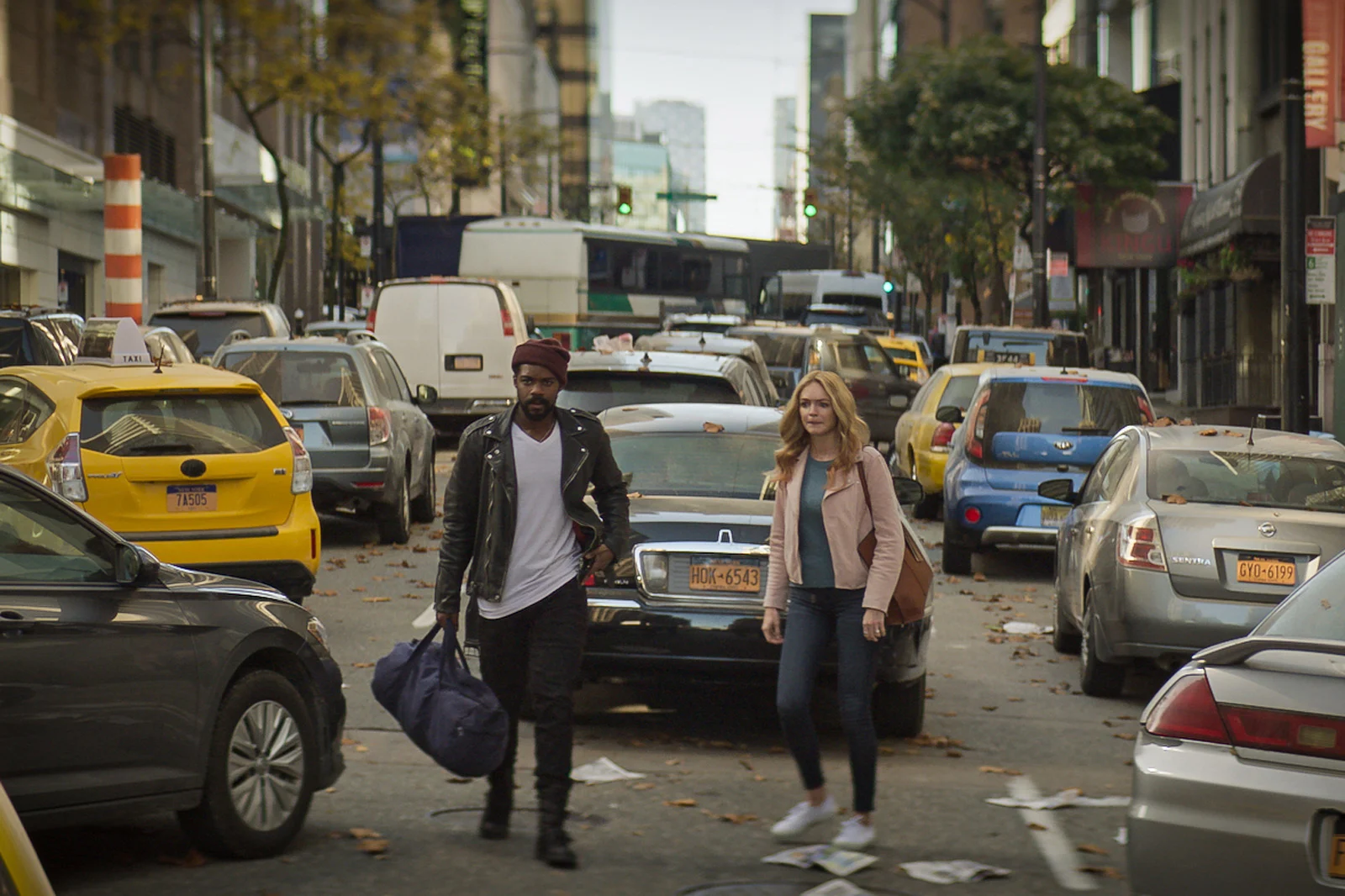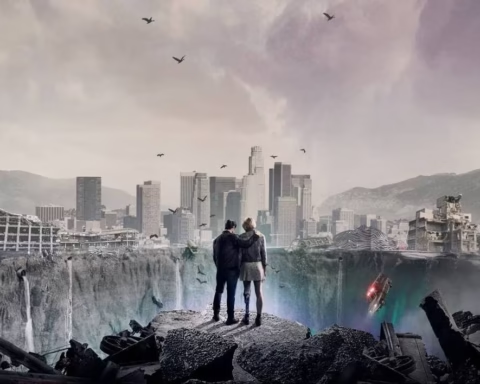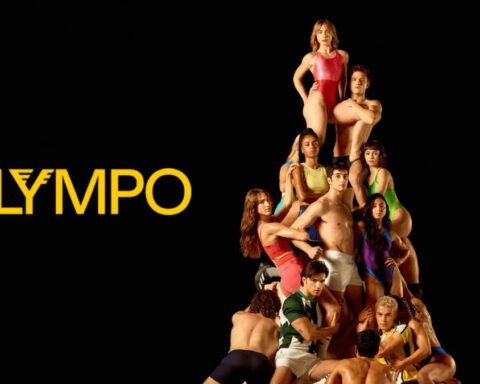In the pantheon of post-apocalyptic narratives, Stephen King’s “The Stand” holds a special place. This isn’t just a story of survival in a world ravaged by a superflu—it’s a sprawling epic of good versus evil, a modern retelling of age-old biblical conflicts, and a meditation on the nature of humanity when stripped of all its trappings. The TV adaptation of King’s monumental novel has attempted to bring this complex tale to life, with varying degrees of success and controversy.
When “The Stand” first hit the small screen, it came at a time when the world was grappling with its own real-life pandemic. Suddenly, the story of Captain Trips—a virus that wipes out 99% of the human population—felt less like fiction and more like a nightmarish possibility. But the show is about far more than just a virus. It’s about what comes after: the rebuilding of society, the battle for the soul of humanity, and the choices that define us. In this article, we’ll delve into the intricacies of the show, dissect its successes and shortcomings, and explore the profound themes that make “The Stand” more than just another dystopian drama.

Act One: The Genesis of ‘The Stand’
Stephen King’s “The Stand” has always been considered one of his magnum opuses, a towering work of fiction that blends horror, fantasy, and social commentary. First published in 1978 and later expanded in 1990, the novel is a beast of a book, spanning over 1,100 pages in its uncut edition. Given its length and complexity, it’s no surprise that adapting it for the screen has always been a daunting task.
The first attempt was the 1994 miniseries, a star-studded yet somewhat dated adaptation that holds a special place in the hearts of King fans, despite its limitations. However, it wasn’t until 2020 that “The Stand” received a modern, more ambitious treatment—this time as a nine-episode series on CBS All Access (now Paramount+). Developed by Josh Boone and Benjamin Cavell, the new adaptation promised to bring a fresh perspective to King’s classic, complete with a new ending written by King himself.
The series had all the ingredients for success: a talented cast, a beloved source material, and the backing of a major streaming service. But as with any adaptation, particularly one of such a revered book, the show was met with both anticipation and skepticism. Could it capture the sprawling, epic nature of the novel? Would it do justice to King’s rich characters and the moral complexity of the story? Or would it, like the superflu within its narrative, collapse under its own weight?

Act Two: A Story of Two Camps
At its core, “The Stand” is a story of two opposing forces, each embodied by a central figure who serves as a beacon for their followers. On one side, we have the embodiment of good: Mother Abagail, a 108-year-old woman who receives visions from God and leads a group of survivors to Boulder, Colorado. On the other, there’s the embodiment of evil: Randall Flagg, a charismatic and malevolent figure who draws the darker elements of humanity to Las Vegas, where chaos reigns.
The conflict between these two camps is not just a battle for survival, but a metaphysical war for the future of humanity. Boulder represents hope, community, and the possibility of a new beginning, while Las Vegas is a den of hedonism, violence, and moral decay. The survivors must choose where they stand—literally and figuratively—in this new world.
The show introduces us to a sprawling ensemble of characters, each with their own storylines that eventually converge. There’s Stu Redman (James Marsden), the everyman who emerges as a natural leader in Boulder; Frannie Goldsmith (Odessa Young), a pregnant young woman who represents the hope for a future generation; Larry Underwood (Jovan Adepo), a musician whose journey from selfishness to selflessness is one of the most compelling arcs; and Harold Lauder (Owen Teague), whose descent into madness and betrayal provides some of the show’s most chilling moments.
On the darker side, we have Lloyd Henreid (Nat Wolff), a petty criminal who becomes Flagg’s right-hand man; Nadine Cross (Amber Heard), a conflicted woman torn between her loyalty to Flagg and her desire for redemption; and of course, Randall Flagg himself, played with devilish charm by Alexander Skarsgård. Skarsgård’s portrayal of Flagg is one of the highlights of the series—he’s magnetic, terrifying, and yet strangely seductive, a villain who revels in chaos and destruction but does so with a smile.

Act Three: The Adaptation Challenge
Adapting “The Stand” for television was always going to be a Herculean task. The novel’s narrative structure is complex, with multiple characters, timelines, and perspectives. To capture the breadth of King’s world, the showrunners chose a non-linear storytelling approach, jumping back and forth in time—a decision that divided viewers. While this method allowed for some intriguing reveals and a more dynamic narrative, it also led to confusion, particularly for those unfamiliar with the source material.
One of the most significant departures from the novel is the way the show handles the backstory of Captain Trips and its aftermath. In the book, King devotes significant time to depicting the collapse of civilization—the panic, the desperation, the slow, creeping dread as society falls apart. The series, however, glosses over much of this, focusing instead on the survivors’ lives after the pandemic. This choice was likely made to streamline the narrative, but it comes at the cost of losing some of the novel’s most harrowing and atmospheric moments.
Another controversial choice was the portrayal of certain characters, particularly Harold Lauder. In the novel, Harold’s transformation from an awkward, resentful teenager into a vengeful and dangerous young man is a slow burn, with King taking great care to explore his psychology. The series, however, accelerates this arc, which some fans felt undermined the complexity of Harold’s character. Despite this, Owen Teague’s performance as Harold is undeniably powerful, capturing the character’s internal struggle and eventual descent into madness.
Then there’s the ending—a new coda written by King himself, which serves as a sort of epilogue to the story. Without spoiling too much, this addition provides a more definitive conclusion to certain characters’ arcs, while also leaving some lingering questions about the nature of good and evil. For fans of the novel, this new ending is a fascinating glimpse into King’s evolving thoughts on the story, though opinions on its effectiveness are mixed.

Act Four: The Style and Symbolism of ‘The Stand’
Visually, “The Stand” is a striking series, with its contrasting depictions of Boulder and Las Vegas serving as a visual metaphor for the central conflict. Boulder, with its wide-open spaces, natural beauty, and sense of community, is shot in warm, earthy tones, emphasizing the idea of rebirth and renewal. Las Vegas, on the other hand, is all neon lights, dark shadows, and garish excess—a city that feels alive in a grotesque, almost otherworldly way.
The show’s cinematography, led by D.P. Tobias A. Schliessler, captures the grandeur and desolation of a world emptied of most of its inhabitants. There are moments of breathtaking beauty—like the sight of a deserted Times Square or the majestic Rocky Mountains—that remind us of the world’s persistence, even in the face of human extinction. But there are also scenes of visceral horror, particularly in the early episodes, where the effects of Captain Trips are depicted with unflinching brutality.
The score, composed by Nate Walcott and Mike Mogis, complements the show’s tone, blending haunting melodies with more hopeful, uplifting compositions. The music often reflects the inner turmoil of the characters, particularly in moments of moral choice or emotional revelation. The use of classic rock songs, a hallmark of King’s work, adds an additional layer of nostalgia and irony—most notably in the chilling use of “Don’t Fear the Reaper” by Blue Öyster Cult in the opening episode.
Symbolism is woven throughout “The Stand,” much of it derived from King’s original text. The most obvious is the stark contrast between the forces of good and evil, represented by Mother Abagail and Randall Flagg. Mother Abagail’s cornfield—a recurring image in both the book and the series—symbolizes purity, faith, and the promise of salvation, while Flagg’s Las Vegas represents temptation, sin, and the allure of power. The crucifixion of certain characters, literal and metaphorical, harks back to Christian iconography, reinforcing the story’s biblical undertones.
Another key symbol is the concept of the “stand” itself—the idea that every person must take a stand for what they believe in, even in the face of overwhelming odds. This is not just a physical stand against Flagg and his followers, but a moral and spiritual one. Each character, from Stu Redman to Nadine Cross, is faced with a choice that defines their role in this new world, and it’s these choices that ultimately determine the outcome of the story.

Act Five: Themes and Philosophies
“The Stand” is a rich tapestry of themes, many of which resonate deeply with our current cultural and political climate. At its heart, the story is about the duality of human nature—the capacity for both great good and unspeakable evil. King’s characters are not mere archetypes of heroism or villainy; they are complex, flawed individuals who struggle with their own demons and desires.
One of the central themes of “The Stand” is the idea of community versus individualism. In Boulder, the survivors come together to build a new society based on cooperation, empathy, and shared values. This is contrasted with Las Vegas, where Flagg’s rule is one of fear, exploitation, and self-interest. The series, like the novel, suggests that humanity’s survival depends on our ability to work together, to build communities that support and protect one another.
Another theme that runs throughout the series is the power of faith—both religious and secular. Mother Abagail’s faith in God is unwavering, and it’s this faith that gives her followers hope and purpose. But the show also explores the darker side of faith—how it can be manipulated and twisted by figures like Flagg, who uses his followers’ devotion to further his own ends. The series raises important questions about the nature of belief and the role it plays in shaping our actions and our world.
The concept of destiny versus free will is also central to “The Stand.” Throughout the series, characters grapple with the idea that their paths may be preordained—that they are part of a larger, cosmic battle between good and evil. But the show also emphasizes the importance of choice, suggesting that while destiny may guide our steps, it is our decisions that ultimately define us. This tension between fate and free will is encapsulated in the character of Harold Lauder, whose choices lead him down a dark path, despite the potential for redemption.
Finally, “The Stand” is a meditation on the resilience of the human spirit. In a world devastated by a pandemic and torn apart by war, the survivors must find the strength to rebuild, to find meaning in the face of unimaginable loss. The show, like the novel, suggests that even in the darkest times, there is hope—a glimmer of light that can guide us through the darkness.

Act Six: The Legacy of ‘The Stand’
As with any adaptation of a beloved work, “The Stand” has faced its share of criticism. Some fans of the novel were disappointed by the changes made to the story, the pacing of the narrative, and the portrayal of certain characters. Others praised the series for its bold choices, its stellar performances, and its ability to capture the epic scope of King’s vision.
But whether you loved it or hated it, there’s no denying that “The Stand” is a significant entry in the canon of Stephen King adaptations. It’s a series that dares to tackle big ideas, to wrestle with complex themes, and to explore the depths of human nature. It’s a show that reflects our fears and our hopes, our capacity for both destruction and creation.
In the end, “The Stand” is more than just a story about a virus or a battle between good and evil. It’s a reflection of our world—a world where the choices we make, individually and collectively, determine the course of our future. It’s a reminder that, even in the face of overwhelming odds, we have the power to take a stand for what we believe in, to fight for a better tomorrow.
And in a time when the world feels more uncertain than ever, that’s a message worth remembering.









